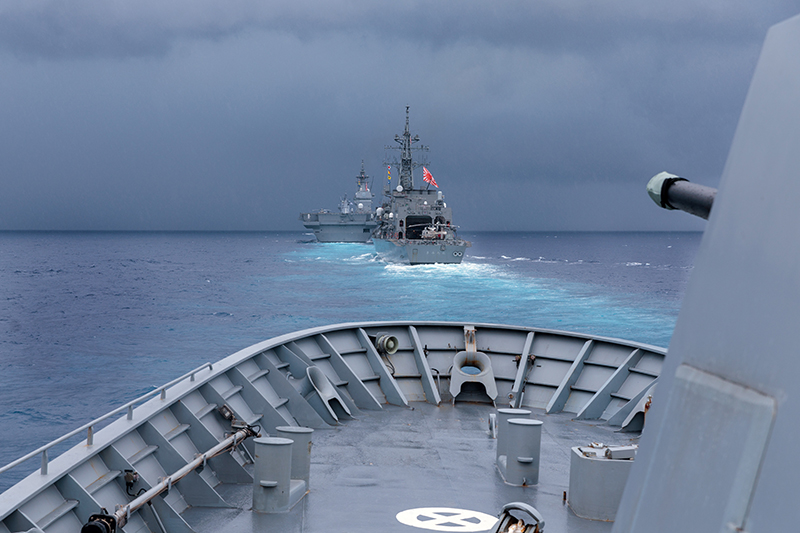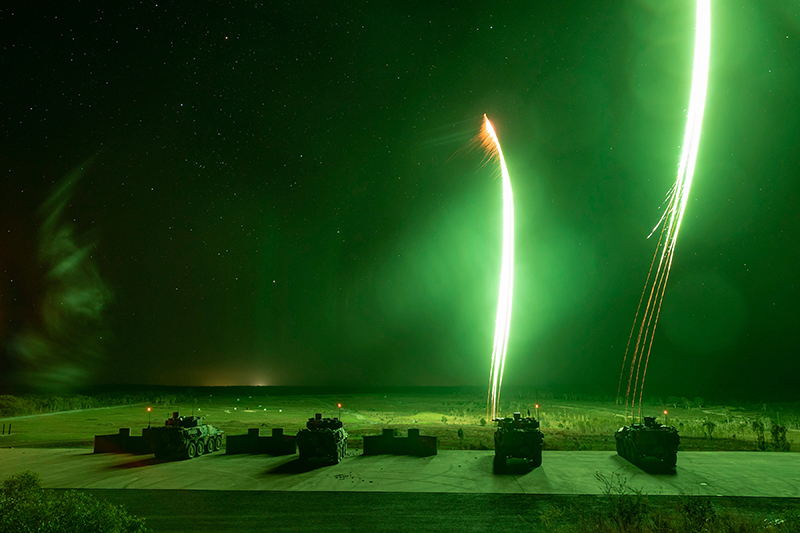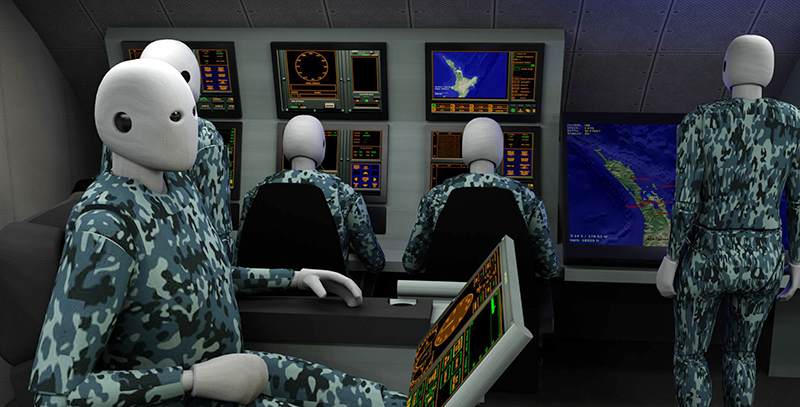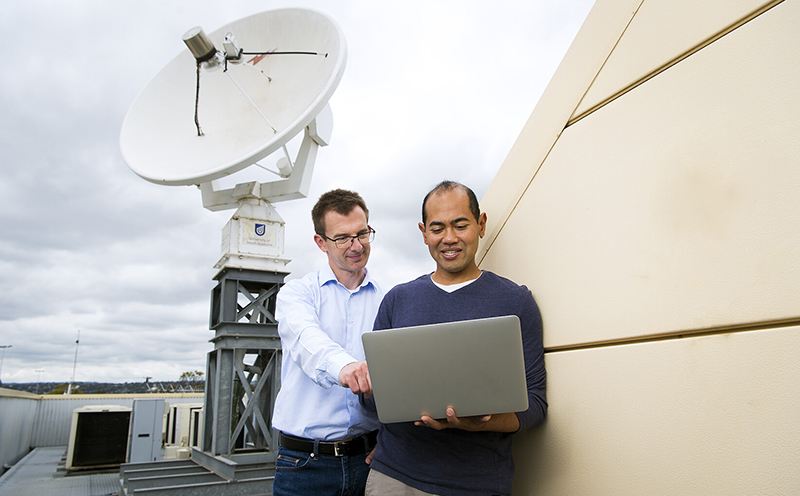01 May 2024
AUTHOR: Samantha Dawes
Escalating tensions in the Indo-Pacific region pose a threat to Australia's security and sovereignty. As an island nation, with a trade-based economy, Australia must be equipped to safeguard its borders and trade routes. Australia’s Minister for Foreign Affairs Penny Wong warned at the ASEAN-Australia Special Summit in March that the country faces “destabilising, provocative and coercive actions” including “unsafe conduct at sea and in the air”. Minister Wong also outlined the volatility of the geopolitical situation, warning “we know that military power is expanding, but measures to constrain military conflict are not”.
The Federal Government's Defence Strategic Review 2023 sets out the case for enhancing Australia’s defence capabilities. The review, and the more recent Surface Fleet Review and Defence Industry Development Strategy, outline era-defining changes to Australia’s defence strategy.

Former Director of Defence and Space at the University of South Australia (UniSA) and newly appointed Chief Executive of Defence SA, Matt Opie, says these changes have been driven by increasing global geopolitical instability “evidenced by conflict in Ukraine, the Middle East and increasing tensions in the South China Sea”.
“More countries are now able to project combat power across greater ranges, which has drastically reduced Australia’s warning time, and preparedness window, for countering conflict,” Opie says.
“We’re also seeing an era-defining shift in the Indo-Pacific, with changing power dynamics … the most notable of these being the United States losing its position as the undisputed leader.”

Credit: Australian Government Department of Defence
Australia has had a long-term strategic alliance with the United States of America, and this will continue under the new AUKUS partnership, along with the UK.
As a member of AUKUS, Australia needs the capability to meet global security challenges and contribute to regional stability.
“With states expanding their long-range missile and cyberwarfare capacity, Australia is unable to rely on its physical distance from potential adversaries," Opie says.
“So, as an island nation, Australia must improve its own statecraft, and ensure our Royal Australian Navy (RAN) – specifically our submarine fleet – is equipped to safeguard our borders, waters and supply routes.”
Australia now finds itself at a critical juncture, compelled to cultivate greater self-reliance in a period of heightened vulnerability.
Precision missiles and explosives are key, but don’t forget about personnel
While the Defence Strategic Review 2023 considers the possibility of an on-continent invasion to be “remote”, the threat of military force or coercion against Australia’s trade and supply routes is, conversely, a real risk.
The review states that priority must be given to nuclear submarines, long-range missiles and explosive ordnance, while also focusing on “unconventional” tactics to circumvent an opponent’s strengths.
Such tactics include enhancing the human performance of RAN personnel.

Credit: Australian Government Department of Defence.

UniSA sleep expert Professor Siobhan Banks has focused on the impact of sleep deprivation on psychological and physiological functioning and how countermeasures within a submarine environment may be used to prevent the negative effects of disturbed sleep, and, thereby, improve cognitive performance and decision-making.
“Everything comes down to sleep – if you cannot get a good sleep, and then you’re working under extreme mental load; your mental processing, your decision-making, and your emotions are far from optimal,” Professor Banks says.

“We have looked at how the interior of a submarine, especially its sleeping quarters, can assist our RAN crew members to perform at their very best.
“In our research, our prototype designs have ensured that lighting is optimised, that beds are not too narrow, and that noise is mitigated as much as possible, along with other measures.”

UniSA biomechanics expert Dr Francois Fraysse and digital design expert Dr Peter Schumacher have also made significant contributions toward enhancing human performance of RAN personnel.
“By understanding the size and physical capacity of our RAN personnel, we get a better understanding of how to design an environment that truly accommodates them,” Dr Fraysse says.
Dr Peter Schumacher has used Dr Fraysse’s biomechanics work to create digital replicas of Australia’s RAN personnel.

“We’ve leveraged industrial design and computer aided design (CAD) to create digital models of Australia’s submarine interiors, which allows us to get a better sense of the space,” Dr Schumacher says.
“Then, we’ve placed our human replicas – also known as Human Digital Models – within this digital realm, so we can see how varying body shapes and sizes occupy the space.
“We’ve brought in Virtual Reality technology to allow our team to embody these RAN personnel, so we can now experience what it is like to be a medium-sized male within a submarine, or a tall female.
“This allows us to get a true sense of how these people move within the submarine, which informs interior design changes and ensures submarine quarters are conducive to human habitability.
“It truly is a battle of millimetres, as small space changes can allow someone to get a better night's sleep or take a proper shower … and this, in turn, can result in better performance or enhance cognitive performance of submariners."
For Matt Opie, the work of Prof Banks, Dr Fraysse and Dr Schumacher are examples of technological developments that can lead to major advantages in the Indo-Pacific region.
“Advances in technology can improve a sonar system, or a weapon system by perhaps one per cent, whereas improving living conditions, reducing fatigue and treating the crew as a critical system can deliver order of magnitude improvements,” Opie says.
Future-proofing defence and space leadership capabilities
Priority must be given to enhancing the performance of Australian defence personnel, especially during active missions. But how does Australia ensure its future defence workforce is ready to navigate this new era of geopolitics?
Both the Australian Defence Force and the private organisations that supply the ADF with technology and expertise, now require a larger pool of specialised applicants that are career-ready.
This includes ensuring more Australians have high-level skills in key technical and specialist trades, including cyber and engineering.
The trilateral partnership Australia has with the UK and the US (AUKUS) demands a rapid upskilling of Australian defence workers, which would meet certain priorities outlined in AUKUS ‘Pillar I’.

For Dean of Postgraduate Programs at UniSA Business, Professor Lan Snell, the “complexities associated with AUKUS require a range of skills and capabilities”.
“The skills required range from technical skills through to project management and leadership capabilities,” Prof Snell says.
“We must ensure that our uniformed and non-uniformed leaders are equipped with the skills required to navigate complex geopolitical relationships and work across different cultural and institutional contexts.
“That’s why UniSA has launched a Global MBA for defence and space executives and senior management.
“We must also create a more robust pipeline of career-ready Australians who possess in-demand skills in key technical areas, such as cybersecurity and engineering, to ensure our private defence sector and the ADF have a stronger pool of highly skilled applicants and personnel to choose from.”

As Australia positions itself to meet the demands of a new geopolitical era, the focus on enhancing human performance reflects a holistic approach towards bolstering national security.
Ultimately, fortifying Australia's borders and Indo-Pacific position will not solely come from advanced weaponry, but also from the fostering a highly skilled and adaptable workforce ready to meet the complex challenges of 2024 and beyond.
Image: Indo-Pacific Endeavour (IPE) is Australia's flagship regional engagement activity, supporting the Australian Government's commitment to investing in our regional diplomatic and defence partnerships. Credit: Australian Department of Defence.
You can republish this article for free, online or in print, under a Creative Commons licence, provided you follow our guidelines.


